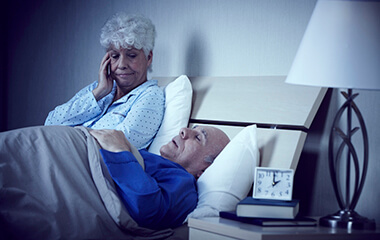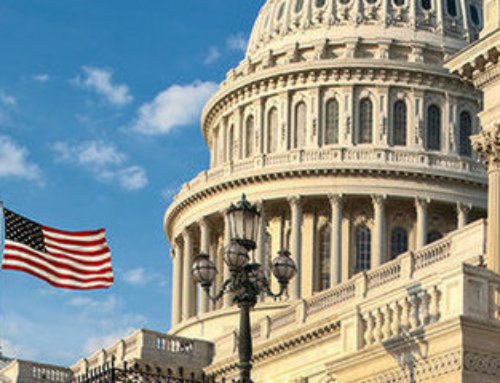DARIEN, IL – Older adults with undiagnosed obstructive sleep apnea seek more health care, according to a study published in the January issue of the Journal of Clinical Sleep Medicine. The study examined the impact of untreated sleep apnea on health care utilization and costs among Medicare beneficiaries.
The authors reviewed a sample of Medicare claims data and found that patients diagnosed with sleep apnea sought medical care more frequently and at higher cost in the 12 months prior to their diagnosis than patients without the sleep disorder. Compared with the control group, those with untreated sleep apnea had greater health care utilization and costs across all points of service, including inpatient, outpatient, emergency and prescription medications in the year leading up to their sleep apnea diagnosis.
Researchers at the University of Maryland and Columbia University also observed that Medicare patients with sleep apnea were more likely to suffer from other ailments than those without the sleep disorder. Sleep apnea is linked to an increased risk for high blood pressure, diabetes, heart disease, stroke and depression. The study authors suggest that insurers, legislators and health system leaders consider routine screening for sleep apnea in older patients, especially those with medical and psychiatric comorbidities, to better contain treatment costs.
“Sleep disorders represent a massive economic burden on the U.S. health care system,” said lead author Emerson Wickwire, Ph.D., associate professor of psychiatry and medicine at the University of Maryland School of Medicine, and director of the insomnia program at the University of Maryland Medical Center – Midtown Campus. “Medicare beneficiaries with obstructive sleep apnea cost taxpayers an additional $19,566 per year. It’s important to realize that costs associated with untreated sleep disorders are likely to continue to accrue year after year, which is why our group focuses on early recognition and treatment.”
Nearly 30 million adults in the U.S. have obstructive sleep apnea, a chronic disease that involves the repeated collapse of the upper airway during sleep. Common warning signs include snoring and excessive daytime sleepiness. A common treatment is PAP therapy, which uses mild levels of air pressure, provided through a mask, to keep the throat open during sleep.
A 2016 report commissioned by the American Academy of Sleep Medicine estimated that undiagnosed sleep apnea among U.S. adults costs $149.6 billion annually. While the report projected it would cost the health care system nearly $50 billion to diagnose and treat every American adult with sleep apnea, treatment would produce savings of $100 billion. The current study in JCSM is the largest analysis to date of the economic burden of untreated sleep apnea among older adult Medicare beneficiaries.
“The good news,” explained Dr. Wickwire, ”is that highly effective diagnostic and treatment strategies are available. Our team is currently using big data as well as highly personalized sleep disorders treatments to improve outcomes and reduce costs associated with sleep disorders.”
In a related commentary also published in the January JCSM, Meir Kryger, M.D., applauds the study’s authors for their analysis of the economic impact of sleep apnea among older adults, highlighting the need for early diagnosis and treatment. He notes that the findings confirm that sleep apnea patients are heavy users of health care five to 10 years before diagnosis of sleep apnea and echoes the researchers call for improved sleep apnea detection and screening.
###
To request a copy of, “Older Adult US Medicare Beneficiaries With Untreated Obstructive Sleep Apnea are Heavier Users of Healthcare than Matched Controls,” or the commentary, “Greater Health Care Utilization and Cost Associated With Untreated Sleep Apnea,” or to arrange an interview with the lead author or an AASM spokesperson, please contact the AASM at 630-737-9700 or media@aasm.org.
The monthly, peer-reviewed Journal of Clinical Sleep Medicine is the official publication of the American Academy of Sleep Medicine, a professional membership society that advances sleep care and enhances sleep health to improve lives through advocacy, education, strategic research and practice standards. The AASM encourages patients to talk to their doctor about sleep problems and visit SleepEducation.org for more information about sleep, including a searchable directory of AASM-accredited sleep centers.





